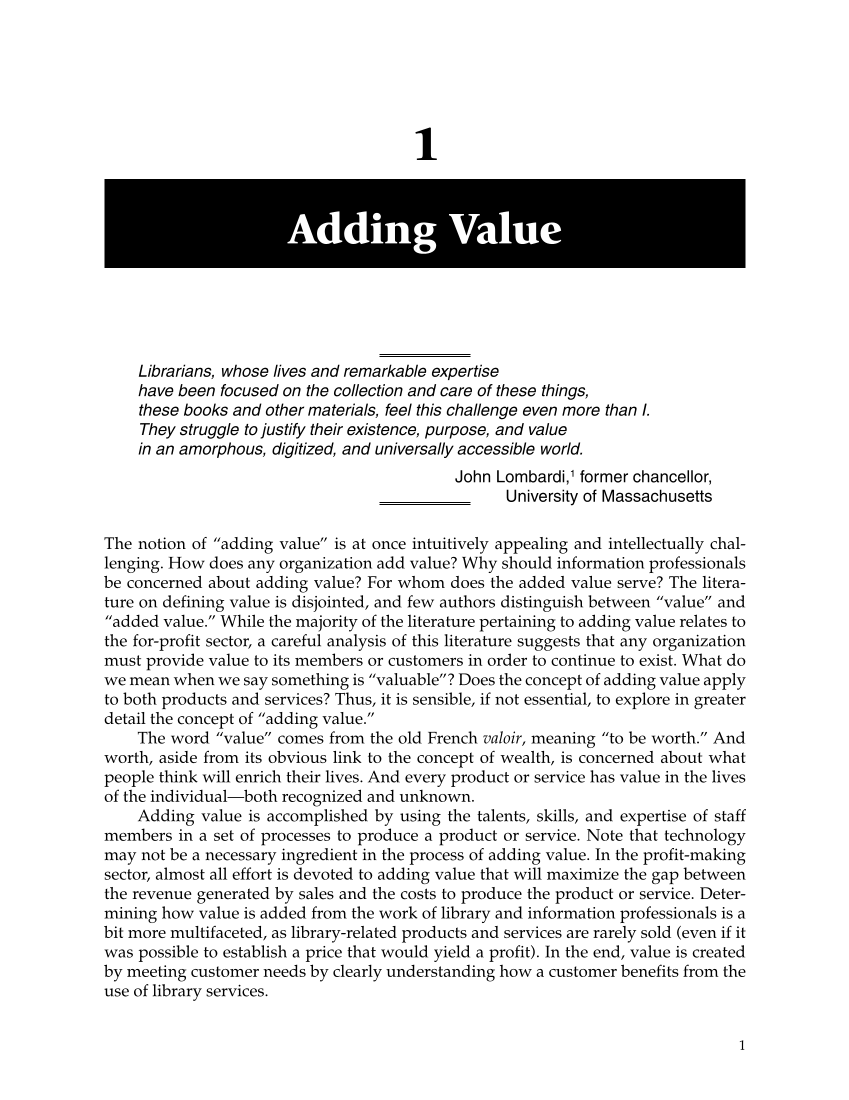1 1 Adding Value Librarians, whose lives and remarkable expertise have been focused on the collection and care of these things, these books and other materials, feel this challenge even more than I. They struggle to justify their existence, purpose, and value in an amorphous, digitized, and universally accessible world. John Lombardi, 1 former chancellor, University of Massachusetts The notion of “adding value” is at once intuitively appealing and intellectually chal- lenging. How does any organization add value? Why should information professionals be concerned about adding value? For whom does the added value serve? The litera- ture on defining value is disjointed, and few authors distinguish between “value” and “added value.” While the majority of the literature pertaining to adding value relates to the for-profit sector, a careful analysis of this literature suggests that any organization must provide value to its members or customers in order to continue to exist. What do we mean when we say something is “valuable”? Does the concept of adding value apply to both products and services? Thus, it is sensible, if not essential, to explore in greater detail the concept of “adding value.” The word “value” comes from the old French valoir , meaning “to be worth.” And worth, aside from its obvious link to the concept of wealth, is concerned about what people think will enrich their lives. And every product or service has value in the lives of the individual—both recognized and unknown. Adding value is accomplished by using the talents, skills, and expertise of staff members in a set of processes to produce a product or service. Note that technology may not be a necessary ingredient in the process of adding value. In the profit-making sector, almost all effort is devoted to adding value that will maximize the gap between the revenue generated by sales and the costs to produce the product or service. Deter- mining how value is added from the work of library and information professionals is a bit more multifaceted, as library-related products and services are rarely sold (even if it was possible to establish a price that would yield a profit). In the end, value is created by meeting customer needs by clearly understanding how a customer benefits from the use of library services.
Document Details My Account Print multiple pages
Print
You have printed 0 times in the last 24 hours.
Your print count will reset on at .
You may print 0 more time(s) before then.
You may print a maximum of 0 pages at a time.


















































































































































































































































































































